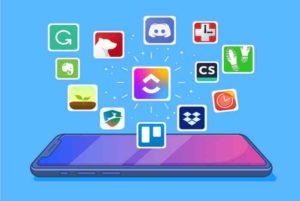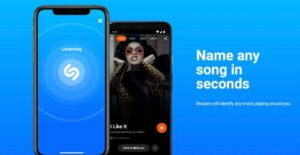Post-pandemic Grocery App Development
Where there’s demand, there will be supply sooner or later. So it’s no shock that grocery delivery service apps are mushrooming every day, encouraged by a spurt in online sales during COVID-19. Thus, pandemic-related shifts in customer behavior translated into an additional $861.12 billion in online revenue with U.S. retailers in 2020 according to Digital Commerce 360.
So you must be thinking “Nah, it’s too late to invest in on-demand delivery app development after COVID-19, right?” Wrong. We have some welcome news for you – you can still get into the last car.
This article will focus on the development of grocery delivery applications. Also, we’ll dwell on the business models of on-demand service apps and functionality to include into your future on-demand delivery solution.
Without further ado, let’s get started.
The lowdown on food delivery apps
The basics are simple: customers choose the items in a stress-free environment, place an order within the app, choose a delivery window and wait for their order to be delivered.
Such platforms revolve around three groups of users – users who order deliveries, admins, and personal shoppers. As you may guess, you have to create a separate application for each of them. Let’s have a closer look at each side of the platform.
- Buyer. Buyers sign into the platform, using their email or phone number. New customers can sign up for the service and fill in the necessary information. After that, buyers choose the groceries from the catalog and proceed with the order. After specifying the delivery timeframe, customers can pay for the order via multiple payment methods.
- Personal shopper. This side of the platform shows ordered deliveries and the list of products to buy. The shopper finds the necessary items and pays for them using the buyer’s money. After that, the service proceeds with grocery delivery.
- Admin. Admin panel allows managing both applications, including product catalog and delivery.
Now that we’ve studied the basics, let’s move onto different business models that can help you define the core functionality for your future application.
On-demand food delivery: Business models
Even before liaising with a development team, you should find a business model well-suited to your core goals. The chosen business model will translate into a certain set of features, underpin the app architecture and influence the monetization strategy.
Let’s have a look at the top three business models applied to food delivery apps.
Aggregator model
This app type simply lists local supermarkets to a user, so the buyer can pick one of the nearby grocery stores. This operating model works great if you don’t own a grocery warehouse. Typically, your platform takes over the delivery service and order gathering.
Instacart, which is the most popular American grocery delivery and pick-up service, has implemented this commercial plan. Users access the service via smartphone or computer, choose from a wide list of chain stores, and compile their grocery basket. The buyers can do the grocery shopping at major participating retailers, such as Mariano’s and Whole Foods.
Store-pick model
This model applies a simple formula of “buy online, pick up in-store” or click and collect. Therefore, you don’t render delivery services. Instead, you provide a personal purchasing agent who collects the order and leaves it for pick-up.
This model is well-known among grocery retail or wholesale companies having their own grocery stores, such as a UK-based grocery retailer, Tesco. It has multiple pick-up points in its stores and in parking lots where consumers can get their orders.
Warehouse model
As the name implies, this model does the trick only if you own a warehouse or a grocery store. In this case, this model will help you to build your digital presence and reach new customers. Also, you’re in charge of packing and delivering orders from your inventory. Walmart’s online grocery delivery makes use of this business model. To use delivery, customers place their orders online at Walmart.com/grocery or on the existing Walmart Grocery App. Then, Walmart’s personal shoppers pick up the orders and deliver them right to the customer. during their specified delivery window.
Now, let’s see how you can rake in money with your on-demand solution.
How on-demand delivery apps generate profit
To turn your undertaking into a source of profit, you can apply one of the following monetization alternatives:
Paid membership
The main point of this monetization model is that the client enters into an agreement with the company (buys a subscription) and then receives a product or service on a regular basis. A person can either pay in advance or once a month or yearly.
Customers like this model since they make a payment just once and forget about buying goods or services for a while. Also, the price of the subscription is usually lower than the cost of the individual products or services it includes.
For businesses, the main advantage of this system is that they get a regular and long-term customer. Additionally, companies can predict their revenue and invest in enhancing their services.
Delivery and service fees
This monetization model simply means that clients pay a fee for a service provided by a company. Fee-for-service is a great fit for warehouse business models. In this case, you request customers’ fees for your shopping services and order delivery based on various factors like the order total and delivery distance.
Hybrid approach
This approach is an unbeatable combo of both mentioned above. For instance, customers who subscribed to your services get a delivery discount. Thus, Instacart applies this business model by offering a paid subscription that helps users avoid additional fees. For example, customers who pay a membership fee can order delivery during busy hours without paying busy prices.
On-demand grocery app: must-have features
The main thing you have to remember about the app development process is that there are mainly three types of users. So, if you are building a multi-vendor platform, the trio combination presupposes different functionality for each side. Let’s have a closer look at core functionality for each of the three solutions.
| Buyer app | Shopper app | Admin panel | |
| Features |
|
|
|
How much does it cost to build a grocery delivery application?
Since the platform includes three main elements, it’s safer to start this project small by building a pilot version. Typically, the app’s first version features only must-have functionality to test and validate your business idea. For this purpose, your assigned development team will launch a Minimal Viable Product for your application. This is a test version of a product, service, or service with a minimal set of features that brings value to the end consumer. MVP is created to test hypotheses and verify the viability of the product and define its value and market potential. The feedback your MVP generates allows you to course-correct during the development stage and avoid unnecessary costs.
When estimating the costs for grocery delivery apps, make sure you factor in project management, Q&A services, bug fixing, and technical documentation services. Technical documentation is vital for tech projects since it helps dev teams to estimate the cost of development and agree on the functionality of the future system. Also, tech documentation will facilitate the enhancement processes and give a clear understanding of whether it is possible to integrate new functionality into the existing system.
In the end, taking into account the above-mentioned factors, a one-platform grocery delivery application will cost you around $30k to $50k depending on the complexity of your project.
The Bottom Line
Over the last few years, the Internet has emerged as a great hub for proving all sorts of on-demand services. In particular, online grocery shopping has seen an influx of new followers due to the busy schedules and COVID-19 quarantine measures. That’s why entrepreneurs are showing keen interest in building their own grocery delivery apps that are experiencing a sharp growth curve.
To hit the ball rolling, you need to define your business and monetization models as well as decide on the must-have functionality. Also, consider providing a safe customer experience by ensuring personal safety measures and contactless deliveries.







